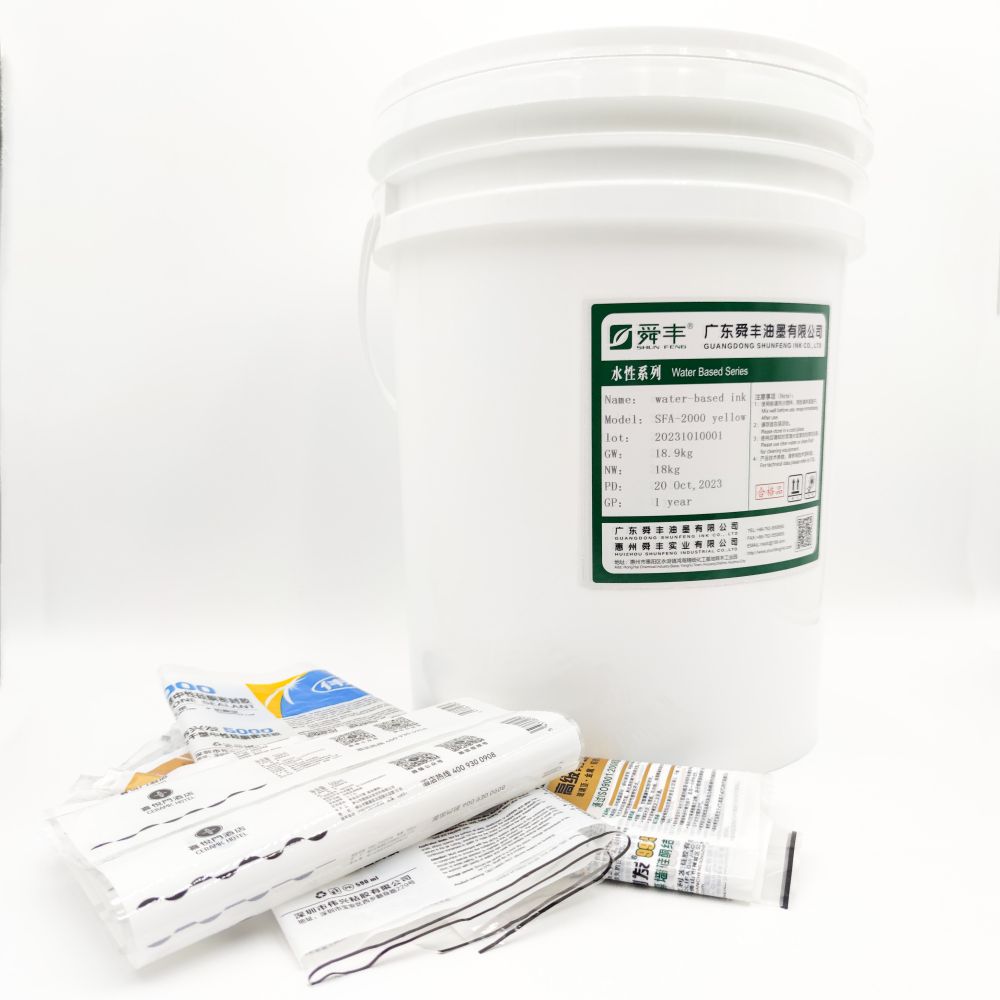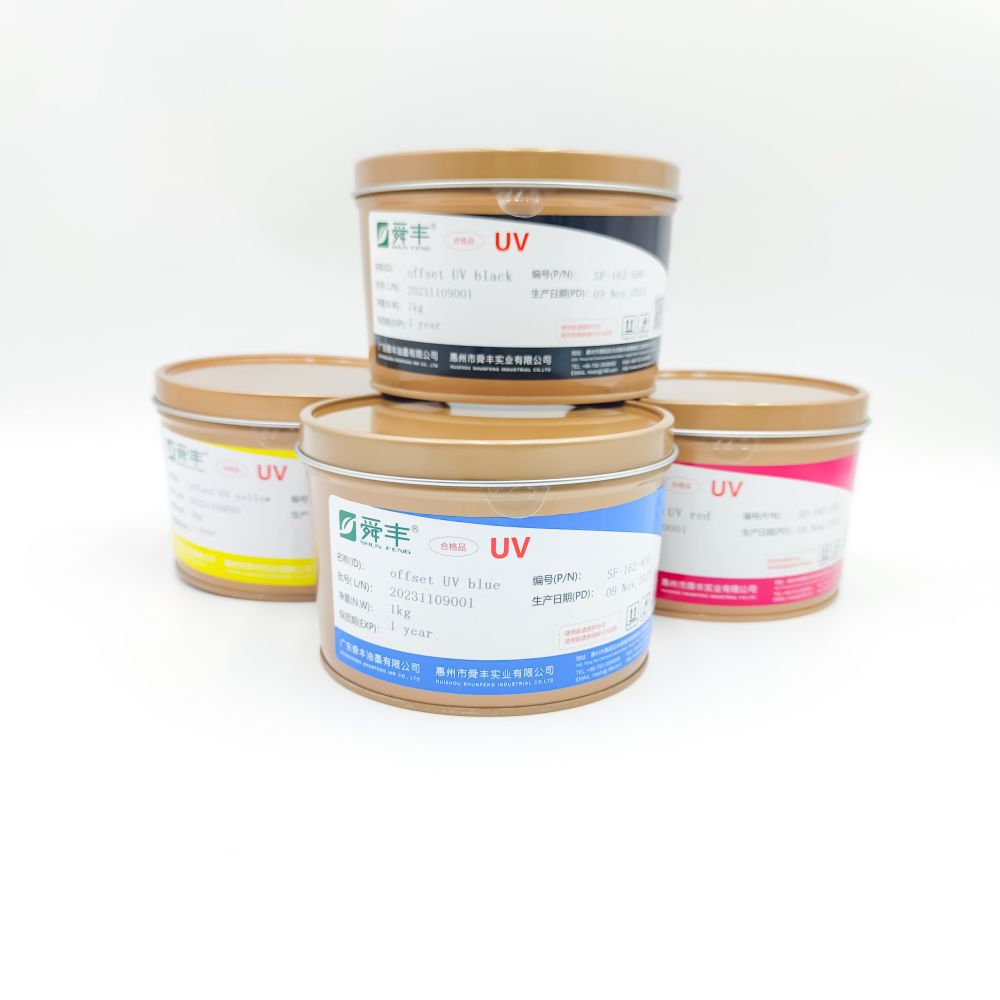Analysis of application problems in water-based ink process
Water-based inks do encounter a variety of problems in practical applications, which may involve the performance of the ink, the printing process, the adaptability of the substrate, and environmental factors. The following are some specific problems: 1. drying speed: the drying speed of water-based ink is usually slower than that of solvent-based ink, which may lead to the problem of printing, blocking or printing efficiency reduction. 2. Adhesion: On some substrates, the adhesion of water-based inks may not be as strong as solvent-based inks, which may cause the printed pattern to fall off or wear easily. 3. Water resistance and chemical resistance: The water resistance and chemical resistance of water-based inks may be insufficient, which may affect the durability and color stability of prints. Color vividness and saturation: Water-based inks may not be as good as some solvent-based inks in terms of color vividness and saturation, which may limit their application in high-quality printed products. Printing accuracy: Water-based ink may fly ink during high-speed printing, which affects printing accuracy and clarity. Storage stability: The storage stability of water-based inks may not be as good as solvent-based inks. Special attention should be paid to storage conditions to avoid ink deterioration. Environmental adaptability: Water-based ink is more sensitive to environmental humidity and temperature, and inappropriate environmental conditions may affect the leveling and printing effect of the ink. 8. Printing equipment compatibility: Switching to water-based inks may require adjustments or modifications to existing printing equipment to adapt to the characteristics of water-based inks. In order to solve these problems, researchers and engineers continue to improve the formulation of water-based ink, improve its performance, but also in the printing technology and equipment innovation, in order to better adapt to the characteristics of water-based ink. In addition, the selection of suitable substrates and pretreatment methods is also the key to ensure good printing results of water-based inks.
Below, I would like to share three issues in ink and wash technique.
What factors affect the drying speed of water-based inks?
What causes water-based inks to bleed on paper?
Is water-based ink stable? How to prevent uneven color depth?
What factors affect the drying speed of water-based inks?
The drying speed of water-based ink refers to the time required for drying after the ink is transferred to the substrate. If the ink dries too fast, it will dry and gradually accumulate on the printing plate and anilox roller, and may block the anilox roller, resulting in the loss or destruction of halftone dots and white leakage on the spot. The ink drying speed is too slow, in multi-color overprinting will also cause the back sticky dirty. It can be said that the drying speed is an important criterion for judging the printing quality of water-based ink. Since the drying speed is so important, what are the factors that affect the drying speed of water-based ink?
PH value, PH value refers to the alkali resistance of water-based ink, which is an important factor to determine the water-based ink and printability. If the PH value of water-based ink is too high, too strong alkalinity will affect the drying speed of ink, resulting in dirty back surface and poor water resistance. If the PH value is too low and the alkalinity is too weak, the viscosity of the ink will increase and the drying speed will become faster, which will easily cause defects such as dirty, which will easily cause. Under normal circumstances, we should control the pH value of water-based ink between 8.0 and 9.5.
2, the printing environment, in addition to the ink itself, how we print the external environment will also affect the drying speed of water-based ink, such as the temperature and humidity of the printing workshop affects the drying speed of water-based ink, the relative humidity reaches 95% Compared with 65%, the drying time is almost 2 times different. At the same time, the ventilation environment will also affect the drying speed of water-based ink. The degree of ventilation is good, the drying speed is fast, the ventilation is poor, and the drying speed is slow.

The substrate, of course, in addition to the above two, is affected by the PH value of the substrate itself when the water-based ink is printed on the surface of the substrate. When the paper is acidic, the coupling agent used as a drier in the water-based ink does not work, and the alkali in the water-based ink is neutralized to advance the drying. When the paper is alkaline, the water-based ink dries slowly, which sometimes limits the water-based ink to achieve complete water resistance. Therefore, the pH value of the substrate material will also affect the drying speed of the water-based ink. Of course, in addition to the above three main factors, there are other factors that will also affect the drying speed of water-based inks, such as the stacking method of substrates, etc., here we will not do a detailed introduction.
What causes water-based inks to bleed on paper?
What is the reason for water-based ink staining on paper? When considering the problem of water-based ink staining, consider it from the following three aspects:
There is a big difference between original ink and replacement ink.
① If it is original ink, consider whether it has expired or been stored for a long time. Both of these situations will affect the sedimentation of ink pigment. The solution is to shake the ink cartridge at room temperature below 10 degrees Celsius so that the pigment can be fully mixed.
② If it is caused by replacing ink, there are many reasons. It's usually a problem with the ratio of water or diluent added during the manufacturing process. Personally, there is no solution to this issue. Try using the above-mentioned method first and hope that it only separates the pigment.
Paper problems are generally divided into coated paper boxes and uncoated paper (must use indoor paper, outdoor paper water-based ink cannot fix color)
① There is nothing to say about uncoated paper. Even if it's the biggest white paper that doesn't like water-based ink, if it's not a coated type, there will be some blurring. The solution is to use coated paper.
② Coated paper, the main consideration is whether the paper has been damp, has expired, the use of the coating is too thin miscellaneous brand, no matter what kind of situation will make the paper coating mixed can not make the surface protection, the middle solid color, the bottom water seepage, and eventually cause blooming. Only the solution to the preservation of roll paper is to say that the original corrugated paper packaging box and the plastic packaging inside should not be allowed, and the unused paper should be put back.
Equipment problem consumables. The print head takes too long to age, resulting in uneven ink distribution and blooming. Use different batches or brands of ink to mix inks with different chemical ratios in the print head. Software, using driver or RIP software to print, did not select the corresponding paper type, resulting in too much ink jet exceeding the limit that the paper can absorb moisture, thus causing blooming.
Is water-based ink stable? How to prevent uneven color depth?
Water-based inks, also known as water-soluble or water-dispersible ink, are abbreviated as "water and ink". Water-based inks are made by dissolving or dispersing high molecular resin soluble in water, coloring agents, surfactants and other related additives through chemical processes and physical processing.
Water-based ink contains a small amount of alcohol water as a solvent, ink stability. Therefore, it is especially suitable for packaging industries such as food and medicine. Water-based ink can be cleaned with water, non-flammable, non-explosive, no adverse effects on the atmospheric environment and the health of workers, and no fire hazards caused by static electricity and flammable solvents, with production safety.
Water-based ink is a new type of printing ink with high color concentration, no longer soluble, good gloss, strong printability, good leveling and high solid content. Water-based ink is easy to operate. When printing, only according to the demand in advance to add people tap water deployment good ink. In the printing process, the appropriate amount of new ink is directly added, and no additional water solvent is needed, which can prevent the color from being different. Water-based ink is generally no longer dissolved in water after drying up. When starting up printing, the printing plate must be immersed in water-based ink to keep rotating, otherwise the water-based ink on the printing plate will dry quickly, causing the plate roller to be blocked and unable to print. In view of the rising price of organic solvents caused by the increasing depletion of petroleum resources, the manufacturing cost and environmental use cost of solvent ink will be increased day by day. The solvent of water-based ink mainly uses tap water, and due to the high concentration of water-based ink, the depth of gravure plate can be shallow.
Therefore, from a cost perspective, although water-based inks are expensive, their overall usage costs are estimated to be about 30% lower than solvent-based inks. There is also less concern about toxic residues of solvents on printed surfaces. The successful application exploration of water-based inks in plastic gravure printing has undoubtedly brought good news for color printing packaging factories.











